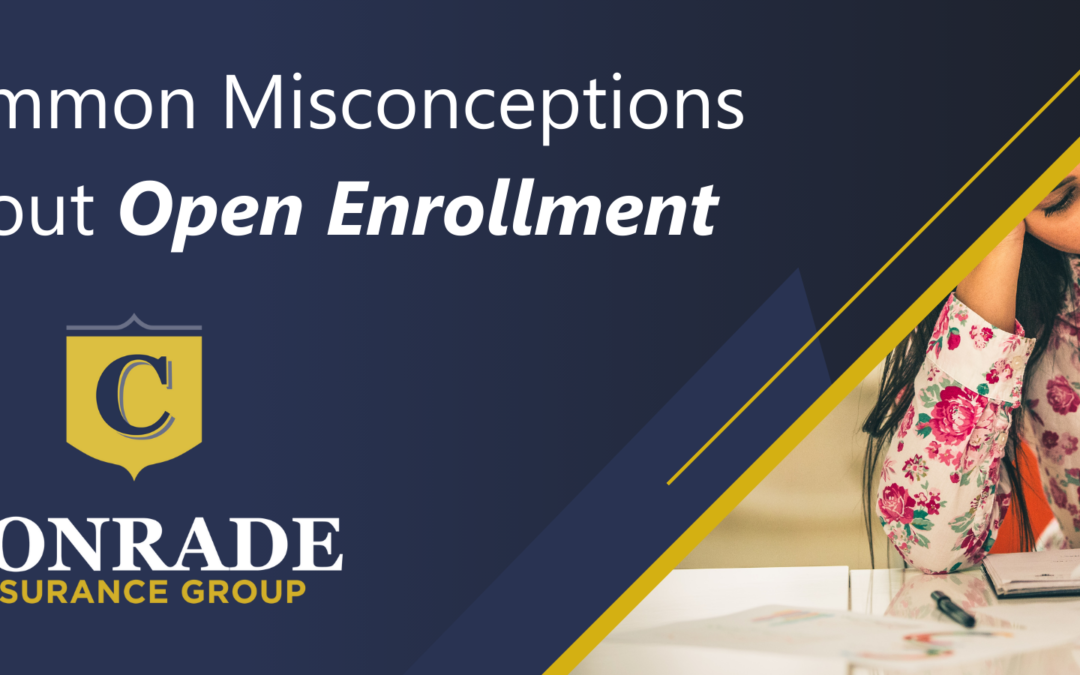Open enrollment can be a daunting time for employees, filled with a plethora of choices, tight deadlines, and potential misunderstandings. For employers, the process can be equally stressful. Helping employees understand the intricacies of benefits enrollment can be a significant challenge, even for the most experienced small business owners and managers.
In this article, we’ll dispel some common misconceptions about open enrollment, empowering your employees to make informed decisions about their benefits.
Misconception 1: Once the open enrollment period has closed, employees can no longer change their health coverage.
Why it’s false:
Federal regulations require health plans to provide for a “special” enrollment period. A special enrollment period is a time outside of your yearly open enrollment when employees can sign up for health insurance or switch plans. A special enrollment period happens whenever an employee experiences a “qualifying life event” (QLE).
There are four main categories of QLEs that can trigger a special enrollment period. We’ll cover the categories in this article, and provide examples of how they might apply in real-life situations.
Since the special enrollment requirement is a federal mandate, the same QLEs apply uniformly across all 50 states. And the employee’s length of tenure doesn’t matter.
Misconception 2: It’s nearly impossible to meet the standards for a QLE.
Why it’s false:
What does and doesn’t constitute a QLE is based on a preset standard, but there are more situations that count as a QLE than you might think. Here are the four basic categories of QLEs that could trigger a special enrollment period:
- Loss of health coverage. A loss of coverage can occur when an employee changes jobs (e.g., starts working for your organization), loses coverage through their spouse’s health plan, or loses eligibility for programs like Medicare, Medicaid, or the Children’s Health Insurance Program. Additionally, if an employee recently turned 26 and is no longer covered under a parent’s health plan, they would qualify for a special enrollment period.
- Household changes. Changes to an employee’s life circumstances may trigger a special enrollment period. Examples include a marriage, a divorce, the birth of a child, an adoption, or the death of a household family member.
- Changes in residence. An employee may qualify for a special enrollment period if they move to another state or sometimes even a different ZIP code or county.
- Other. Examples include a shift in the employee’s income that could affect the health coverage they’re eligible for, or a change in their citizenship status.
Misconception 3: Open enrollment is just a time for employees to see if they can get cheaper health insurance.
Why it’s false:
If an employee is satisfied with their current coverage, they may see open enrollment as a chance to explore cheaper options. It’s common for employees to think their deductible is too high, or to look for a plan that offers lower prescription costs. But open enrollment isn’t just a time to explore costs. It’s a time to compare coverage options and determine which plan makes the most sense for them and their dependents, based on their unique current (or anticipated) circumstances.
Here are a few key things that employees should consider as they explore their options during open enrollment:
- Do they have children who will age out of their health plans (turn 26) during the coverage year?
- Are they seeing the specialists they need to see, or may need to see, in the upcoming coverage year?
- Can they sacrifice a level of coverage for lower monthly premiums?
- Are they up to date on their dental and vision appointments?
- Do they expect to welcome a new family member during the coverage year, whether by birth or adoption?
It’s also worth noting that a more expensive plan isn’t always better for every employee. The right plan depends on the employee’s health needs, usage patterns and financial situation.
Misconception 4: If an employee doesn’t make changes during open enrollment, their benefits won’t change.
Why it’s false:
Employees often assume that if they’re happy with their benefits, they don’t need to review anything during open enrollment. But this may not be true. For example, provider networks, premiums, coverage amounts and voluntary benefits can change from year to year. Make sure your employees are aware of these changes ahead of open enrollment.
Some plans, including flexible spending accounts (FSAs), require an employee to actively re-enroll each year. So it’s important for them to review their benefits annually. If they don’t take this step, they could be surprised by benefits changes or even lose access to their FSA benefits for the upcoming year.

